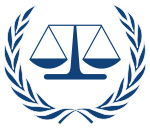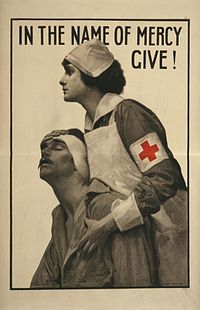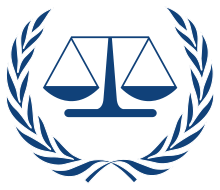- Geneva Conventions
-
 The Geneva Convention: The signature-and-seals page of the First Geneva Convention (1864), establishing humane rules of war.
The Geneva Convention: The signature-and-seals page of the First Geneva Convention (1864), establishing humane rules of war.
The Geneva Conventions comprise four treaties, and three additional protocols, that establish the standards of international law for the humanitarian treatment of the victims of war. The singular term Geneva Convention denotes the agreements of 1949, negotiated in the aftermath of the Second World War (1939–45), which updated the terms of the first three treaties (1864, 1906, 1929), and added a fourth treaty. The articles of the Fourth Geneva Convention (1949) extensively defined the basic rights of prisoners (civil and military) during war; established protections for the wounded; and established protections for the civilians in and around a war zone. The treaties of 1949 were ratified, in whole or with reservations, by 194 countries.[1] The Geneva Convention defines the rights and protections of non-combatants, thus:
“ Protected persons are entitled, in all circumstances, to respect for their persons, their honour, their family rights, their religious convictions and practices, and their manners and customs. They shall, at all times, be humanely treated, and shall be protected, especially against all acts of violence or threats thereof and against insults and public curiosity. Women shall be especially protected against any attack on their honour, in particular against rape, enforced prostitution, or any form of indecent assault. Without prejudice to the provisions relating to their state of health, age and sex, all protected persons shall be treated with the same consideration by the Party to the conflict in whose power they are, without any adverse distinction based, in particular, on race, religion or political opinion. However, the Parties to the conflict may take such measures of control and security in regard to protected persons as may be necessary as a result of the war. ” —— Article 27, Fourth Geneva Convention (1949)
Moreover, because the Geneva Conventions are about people in war, the articles do not address warfare proper — the use of weapons of war — which is the subject of the Hague Conventions (First Hague Conference, 1899; Second Hague Conference 1907), and the bio–chemical warfare Geneva Protocol (Protocol for the Prohibition of the Use in War of Asphyxiating, Poisonous or other Gases, and of Bacteriological Methods of Warfare, 1929).
Contents
History
In 1862, Henry Dunant published his book, Memoir of Solferino, on the horrors of war.[2] His wartime experiences inspired Dunant to propose:
- a permanent relief agency for humanitarian aid in times of war, and
- a government treaty recognizing the neutrality of the agency and allowing it to provide aid in a war zone.
The former proposal led to the establishment of the Red Cross in Geneva. The latter led to the First Geneva Convention. For both of these accomplishments, Henry Dunant became corecipient of the first Nobel Peace Prize in 1901.[3][4]
The ten articles of this first treaty were initially adopted on August 22, 1864 by twelve nations.[5] Clara Barton was instrumental in campaigning for the ratification of the First Geneva Convention by the United States, which eventually ratified it in 1882.[6]
The second treaty was first adopted in the Geneva Convention for the Amelioration of the Condition of the Wounded and Sick in Armies at Sea, concluded on July 6, 1906 and specifically addressed members of the Armed Forces at sea.[7] It was continued in the Geneva Convention relative to the Treatment of Prisoners of War, concluded on July 27, 1929 and entered into effect on June 19, 1931.[8] Inspired by the wave of humanitarian and pacifistic enthusiasm following World War II and the outrage towards the war crimes disclosed by the Nuremberg Trials, a series of conferences were held in 1949 reaffirming, expanding and updating the prior three Geneva Conventions and adding a new elaborate Geneva Convention relative to the Protection of Civilian Persons in Time of War.
Despite the length of these documents, they were found over time to be incomplete. In fact, the very nature of armed conflicts had changed with the beginning of the Cold War era, leading many to believe that the 1949 Geneva Conventions were addressing a largely extinct reality[9]: on the one hand, most armed conflicts had become internal, or civil wars, while on the other, most wars had become increasingly asymmetric. Moreover, modern armed conflicts were inflicting an increasingly higher toll on civilians, which brought the need to provide civilian persons and objects with tangible protections in time of combat, thus bringing a much needed update to the Hague Conventions of 1899 and 1907. In light of these developments, two Protocols were adopted in 1977 that extended the terms of the 1949 Conventions with additional protections. In 2005, a third brief Protocol was added establishing an additional protective sign for medical services, the Red Crystal, as an alternative to the ubiquitous Red Cross and Red Crescent emblems, for those countries that find them objectionable.
The conventions and their agreements
The Geneva Conventions comprise rules that apply in times of armed conflict and seek to protect people who are not or are no longer taking part in hostilities, for example:
- wounded or sick fighters
- prisoners of war
- civilians
- medical and religious personnel
Conventions
In diplomacy, the term convention does not have its common meaning as an assembly of people. Rather, it is used in diplomacy to mean an international agreement, or treaty. The first three Geneva Conventions were revised and expanded in 1949, and the fourth was added at that time.
- First Geneva Convention for the Amelioration of the Condition of the Wounded and Sick in Armed Forces in the Field, 1864
- Second Geneva Convention for the Amelioration of the Condition of Wounded, Sick and Shipwrecked Members of Armed Forces at Sea, 1906
- Third Geneva Convention relative to the Treatment of Prisoners of War, 1929
- Fourth Geneva Convention relative to the Protection of Civilian Persons in Time of War, 1949
The whole set is referred to as the "Geneva Conventions of 1949" or simply the "Geneva Convention".
Protocols
The 1949 conventions have been modified with three amendment protocols:
- Protocol I (1977) relating to the Protection of Victims of International Armed Conflicts
- Protocol II (1977) relating to the Protection of Victims of Non-International Armed Conflicts
- Protocol III (2005) relating to the Adoption of an Additional Distinctive Emblem.
Application
The Geneva Conventions apply at times of war and armed conflict to governments who have ratified its terms. The details of applicability are spelled out in Common Articles 2 and 3. The topic of applicability has generated some controversy. When the Geneva Conventions apply, governments have surrendered some of their national sovereignty by signing these treaties.
Common Article 2 relating to International Armed Conflicts
This article states that the Geneva Conventions apply to all cases of international conflict, where at least one of the warring nations have ratified the Conventions. Primarily:
- The Conventions apply to all cases of declared war between signatory nations. This is the original sense of applicability, which predates the 1949 version.
- The Conventions apply to all cases of armed conflict between two or more signatory nations, even in the absence of a declaration of war. This language was added in 1949 to accommodate situations that have all the characteristics of war without the existence of a formal declaration of war, such as a police action.[10]
- The Conventions apply to a signatory nation even if the opposing nation is not a signatory, but only if the opposing nation "accepts and applies the provisions" of the Conventions.[10]
Article 1 of Protocol I further clarifies that armed conflict against colonial domination and foreign occupation also qualifies as an international conflict.
When the criteria of international conflict have been met, the full protections of the Conventions are considered to apply.
Common Article 3 relating to Non-International Armed Conflict
This article states that the certain minimum rules of war apply to armed conflict that is not of an international character, but that are contained within the boundaries of a single country. The applicability of this article rests on the interpretation of the term armed conflict.[10] For example it would apply to conflicts between the Government and rebel forces, or between two rebel forces, or to other conflicts that have all the characteristics of war but that are carried out within the confines of a single country. A handful of individuals attacking a police station would not be considered an armed conflict subject to this article, but only subject to the laws of the country in question.[10]
The other Geneva Conventions are not applicable in this situation but only the provisions contained within Article 3,[10] and additionally within the language of Protocol II. The rationale for the limitation is to avoid conflict with the rights of Sovereign States that were not part of the treaties. When the provisions of this article apply, it states that:
- Persons taking no active part in hostilities, including military persons who have ceased to be active as a result of sickness, injury, or detention, should be treated humanely.
- The wounded and sick shall be collected and cared for.
Enforcement
Enforcement authority of the United Nations Security Council
The final international tribunal for all issues related to the Geneva Conventions and other treaties is the United Nations Security Council. As a charter, the UN Charter is a constituent treaty, and all members are bound by its articles. The UN Charter's Article 25 and others[11] require that obligations to the United Nations prevail over all other treaty obligations. The UNSC rarely invokes its authority regarding the Geneva Conventions and so most issues are resolved by regional treaties or by national law.
Protecting powers
The term protecting power has a specific meaning under these Conventions. A protecting power is a state that is not taking part in the armed conflict, but that has agreed to look after the interests of a state that is a party to the conflict. The protecting power is a mediator enabling the flow of communication between the parties to the conflict. The protecting power also monitors implementation of these Conventions, such as by visiting the zone of conflict and prisoners of war. The protecting power must act as an advocate for prisoners, the wounded, and civilians.
Grave breaches
Not all violations of the treaty are treated equally. The most serious crimes are termed grave breaches, and provide a legal definition of a war crime. Grave breaches of the Third and Fourth Geneva Conventions include the following acts if committed against a person protected by the convention:
- willful killing, torture or inhumane treatment, including biological experiments
- willfully causing great suffering or serious injury to body or health
- compelling someone to serve in the forces of a hostile power
- willfully depriving someone of the right to a fair trial if accused of a war crime.
Also considered grave breaches of the Fourth Geneva Convention are the following:
- taking of hostages
- extensive destruction and appropriation of property not justified by military necessity and carried out unlawfully and wantonly
- unlawful deportation, transfer, or confinement.[12]
Nations who are party to these treaties must enact and enforce legislation penalizing any of these crimes.[13] Nations are also obligated to search for persons alleged to commit these crimes, or ordered them to be committed, and to bring them to trial regardless of their nationality and regardless of the place where the crimes took place.
The principle of universal jurisdiction also applies to the enforcement of grave breaches when the UN Security Council asserts its authority and jurisdiction from the UN Charter to apply universal jurisdiction. The UNSC did this via the International Criminal Court when they established the International Criminal Tribunal for Rwanda and the International Criminal Tribunal for the former Yugoslavia to investigate and/or prosecute alleged violations.
The Geneva Conventions today
Although warfare has changed dramatically since the Geneva Conventions of 1949, they are still considered the cornerstone of contemporary International Humanitarian Law.[14] They protect combatants who find themselves hors de combat, and they protect civilians caught up in the zone of war. These treaties came into play for all recent international armed conflicts, including the War in Afghanistan (2001–present)[15], the 2003 invasion of Iraq, the invasion of Chechnya (1994–present)[16], and the 2008 War in Georgia.
Modern warfare continues to evolve, and the lines between combatants and civilians have blurred.[17] (for instance, the Sri Lankan Civil War, the Sudanese Civil War, and the Colombian Armed Conflict). Common Article 3 deals with these situations, supplemented by Protocol II (1977). These set out minimum legal standards that must be followed for internal conflicts. International tribunals, particularly the International Criminal Tribunal for the former Yugoslavia, have helped to clarify international law in this area.[18] In the 1999 Prosecutor v. Dusko Tadic judgement, the International Criminal Tribunal for the Former Yugoslavia ruled that grave breaches apply not only to international conflicts, but also to internal armed conflict. Further, those provisions are considered customary international law, allowing war crimes prosecution by the United Nations and its International Court of Justice over groups that have signed and have not signed the Geneva Conventions.
See also
- Civilian
- International humanitarian law
- International Committee of the Red Cross
- Geneva Conference
- Attacks on humanitarian workers
- Human rights
- International Federation of Red Cross and Red Crescent Societies
- Laws of war
- Nuremberg Principles
- Reprisals
- Rule of Law in Armed Conflicts Project
- Convention on Certain Conventional Weapons
- Targeted killing
- Ian Fishback
- German Prisoners of War in the United States
References
- ^ "State Parties / Signatories: Geneva Conventions of 12 August 1949". International Humanitarian Law. International Committee of the Red Cross. http://www.icrc.org/ihl.nsf/WebSign?ReadForm&id=375&ps=P. Retrieved 2007-01-22.
- ^ Dunant, Henry. A Memory of Solferino. http://www.icrc.org/eng/resources/documents/publication/p0361.htm. English version, full text online.
- ^ Abrams, Irwin (2001). The Nobel Peace Prize and the Laureates: An Illustrated Biographical History, 1901-2001. US: Science History Publications. http://books.google.com/books?id=ny77bPwKxaUC. Retrieved 2009-07-14.
- ^ The story of an idea, film on the creation of the Red Cross, Red Crescent Movement and the Geneva Conventions
- ^ Roxburgh, Ronald (1920). International Law: A Treatise. London: Longmans, Green and co.. p. 707. http://books.google.com/books?id=G8NAAAAAIAAJ. Retrieved 2009-07-14. The original twelve original countries were Switzerland, Baden, Belgium, Denmark, France, Hesse, Holland, Italy, Portugal, Prussia, Spain, and Wurtemburg.
- ^ Burton, David (1995). Clara Barton: in the service of humanity. London: Greenwood Publishing Group. http://books.google.com/books?id=rJyTkPqIC-sC. Retrieved 2009-07-14.
- ^ Text of the 1906 convention (French)
- ^ Text in League of Nations Treaty Series, vol. 118, pp. 304-341.
- ^ Kolb, Robert (2009). Ius in bello. Basel: Helbing Lichtenhahn.
- ^ a b c d e Pictet, Jean (1958). Geneva Conventions of 12 August 1949: Commentary. International Committee of the Red Cross. http://www.loc.gov/rr/frd/Military_Law/Geneva_conventions-1949.html. Retrieved 2009-07-15.
- ^ http://www.un.org/en/documents/charter/preamble.shtml
- ^ How "grave breaches" are defined in the Geneva Conventions and Additional Protocols, International Committee of the Red Cross.
- ^ For example, the War Crimes Act of 1996.
- ^ "The Geneva Conventions Today". International Committee of the Red Cross. http://www.icrc.org/web/eng/siteeng0.nsf/html/geneva-conventions-statement-090709. Retrieved 2009-11-16.
- ^ See U.S. Supreme Court decision, Hamdan v. Rumsfeld
- ^ Abresch, William (2005). "A Human Rights Law of Internal Armed Conflict: The European Court of Human Rights in Chechnya". European J. of International Law 16 (4). http://www.ejil.org/pdfs/16/4/316.pdf.
- ^ "Sixty years of the Geneva Conventions and the decades ahead". International Committee of the Red Cross. http://www.icrc.org/web/eng/siteeng0.nsf/html/geneva-convention-statement-091109?opendocument. Retrieved 2009-11-16.
- ^ "The Prosecutor v. Dusko Tadic - Case No. IT-94-1-A". International Criminal Tribunal for the Former Yugoslavia. http://www.icty.org/x/file/Legal%20Library/jud_supplement/supp6-e/tadic.htm. Retrieved 2009-11-16.
External links
- Texts and commentaries of 1949 Conventions & Additional Protocols
- The Geneva Conventions: the core of international humanitarian law, ICRC
- www.SupportGenevaConventions.info
- Text of the Geneva Conventions 1 2 3 4 at the Center for a World in Balance
- Human Rights First; Leave No Marks: Enhanced Interrogation Techniques and the Risk of Criminality
- List of parties
International Criminal Court (ICC) Legal texts International Rome Statute (amendments) · Agreement on Privileges and Immunities · Agreements on the Enforcement of Sentences · Geneva Conventions · United Nations CharterUN resolutions General Assembly Security Council National American Service-Members' Protection Act (United States) · Crimes Against Humanity and War Crimes Act (Canada) · International Criminal Court Act 2001 (United Kingdom) · Twenty-third Amendment of the Constitution (Ireland) · Völkerstrafgesetzbuch (Germany)
Crimes Organisation States parties List of states parties · Presidents and Vice-Presidents of the Assembly of States Parties · Review ConferenceCourt Investigations Official Complaints IraqIndividuals Other American Non-Governmental Organizations Coalition for the ICC · Coalition for the ICC · European Union and the ICC · United States and the ICC · World Day for International JusticeInternational criminal law Sources of international
criminal lawCustomary international law · Peremptory norm · Hague Conventions · Geneva Conventions · Nuremberg Charter · Nuremberg Principles · United Nations Charter · Genocide Convention · Convention Against Torture · Rome StatuteCrimes against
international lawInternational courts International Military Tribunal · International Military Tribunal for the Far East · International Criminal Tribunal for the former Yugoslavia · International Criminal Tribunal for Rwanda · Special Court for Sierra Leone · Extraordinary Chambers in the Courts of Cambodia · Special Panels of the Dili District Court · Special Tribunal for Lebanon · International Residual Mechanism for Criminal Tribunals
International Criminal CourtHistory Related concepts Categories:
Wikimedia Foundation. 2010.


